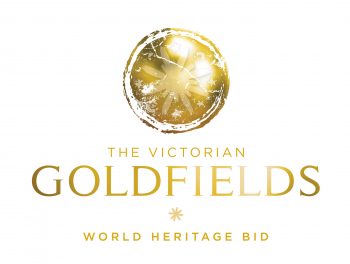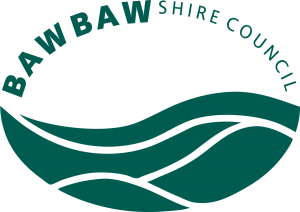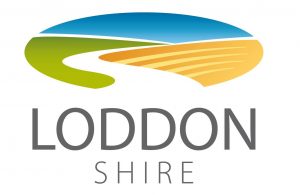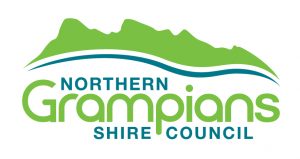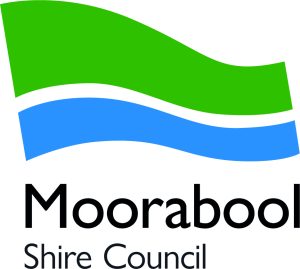This early version of the proposed Statement of Outstanding Universal Value for the Victorian Goldfields was developed as a draft by UK World Heritage expert Barry Gamble (10/20). The purpose of this draft was to start the journey of understanding what makes the goldfields globally significant. It was designed to be tested and debated as more evidence comes to light and more stakeholders become involved, including the regions’ First Nations Peoples. The final Statement of Outstanding Universal Value, which will incorporate this further work, as well as the extent of the property and its attributes, are a work in progress.
Brief synthesis (initial draft)
Victorian Goldfields is a cultural landscape. It comprises a series of landscapes, rural and urban, that exemplify the goldrush phenomenon in all its technological, social and environmental character and consequences. Moreover, it represents one of the most significant and sensational goldrushes the world has ever witnessed.
Goldrushes are unprecedented events in world history. The principal global goldrush era is characterised by a succession of overlapping rushes from 1849 to 1900. They led to profound consequences in globalisation and represent a universal theme of mass migration motivated by economic opportunity.
Triggered in 1851, the Victorian Goldrush was the only major goldrush that predominantly comprised immigrants from overseas. They came by sea from Great Britain and Ireland, China, continental Europe and the United States. Over 350,000 of them. In the first decade, forty per cent of world gold production flowed from Victoria.
Castlemaine Diggings, scene of the 1852-54 Mount Alexander Goldrush, was the first major goldfield in Australia to attract a huge influx of voluntary immigrants. Its landscape provides exceptional testimony to the early-rush individual ‘miner-adventurer’, and eloquently captures the human goldrush spirit in material form. Diggers’ small claims, across the goldfields in gullies and flats, surrounded by regenerating Box-Ironbark forest, yielded the greatest concentration of the largest gold nuggets the world had ever known; a catalyst for hundreds of spontaneous rushes by large populations.
Unusually, around eighty per cent of immigrants decided to stay. An appealing settler environment was further sustained by the primacy of Goldfields’ law and order enshrined in Eureka and the Miner’s Right – and by consequential mining progress in typical goldrush pattern: technological succession from ‘surfacing’ and ‘shallow-sinking’ in alluvial deposits, to ‘deep-sinking’ in Ballarat’s ‘buried ancient rivers of gold’ and Bendigo’s deep reefs. The 1870s marked an engineering milestone in the greatest concentration of deep mine shafts in the southern hemisphere; in fact, the deepest on any gold mines, worldwide.
Transient camps of unknown gold-seekers are succeeded by a mosaic of rural gold towns, and the mining centres of Bendigo and Ballarat. Distinguished by new grid-plans, wide boulevards, and a proliferation of archetypal goldrush public buildings, these instant cities in grand Victorian colonial style survive among the finest and most architecturally-notable historic gold cities in the world.
Stark contrast is provided by the Aboriginal peoples’ traditional lands upon which the gold was found. With deep reverence for their country, and no ready utilisation for gold, the goldrush led to devastating impacts. For them, the goldrush was the precursor for ‘a world turned upside down’. A familiar goldrush trait.
Proposed criteria (initial draft)
The following two criterions are proposed for justification for the World Heritage inscription:
(iv) be an outstanding example of a type of building, architectural or technological ensemble or landscape which illustrates (a) significant stage(s) in human history;
Victorian Goldfields is a cultural landscape that reflects the entire functional assemblage of one of the world’s most significant goldrushes and historic gold-producing provinces. The landscape, as a whole, binds exceptional technological ensembles and distinctive goldrush architecture in an evolved series of interrelated systems. It represents the most extensive, coherent and best-surviving landscape, anywhere, that illustrates the global goldrush phenomenon of the second half of the nineteenth century. Fifty years of spontaneous and voluntary mass migrations across the world prompted an unprecedented increase in gold production, a significant stage which profoundly affected the course of human history.
The natural environment in all its geological, topographical and biogeographical diversity, includes essential cultural elements of a ‘type’ goldrush pattern set within a broader mosaic of pastoralism: shallow alluvial workings and ephemeral diggers’ camps, more extensive and better-preserved than in any other historic goldfield; early and dramatic open-cuts on quartz reefs (veins); the system of ‘deep leads’, ancient gold rivers buried by basalt lava flows, marked in the open agricultural landscape by ruins of massive beam-pumping engine houses and their attendant geological triptych of waste heaps; and the progressive and highly capitalised corporate quartz-reef mines of Bendigo that once hosted the largest concentration of deep mine shafts in the world. Ore-processing sites are notable by comparative rarities: the puddling mills (evolved and applied on an exceptional scale in Victorian Goldfields), Cornish stamping mills and quartz-roasting kilns, for example.
Historic social infrastructure is an imperative cultural marker; the new colony doubling its population between 1860 and 1900. A pattern of contemporaneous settlements linked by new transport networks reflects the shifting geography and longevity of gold output. Late-Victorian colonial architecture distinguishes archetypal ‘goldrush’ building functions, such as: banks and post offices; mining exchanges, mining schools and mechanics’ institutes; courthouses, police stations and gaols; together with housing from the miner’s cottage to the magnate’s mansion. Formative social and political processes are elucidated at places directly associated with events such as the Monster Meeting and Eureka and the Miner’s Right (1851-55). Early mixed ethnicities, cultures and religions are reflected from the diggings to the church, chapel, cemetery and ‘joss house’; moreover, Chinese community processions held in goldfield towns to support charity work is part of Goldfields’ cultural tradition since the 1870s.
(vi) be directly or tangibly associated with events…of outstanding universal significance.
Victorian Goldfields is an exceptional cultural landscape that is directly and tangibly associated with the transnational phenomenon of goldrushes that date from 1849-1900. These events are of outstanding universal significance, as much social and cultural watersheds as they are economic. They comprise overlapping spontaneous mass-migrations of individual gold-seekers which generated an unprecedented increase in global gold production: in fifty years, as much gold as that which was mined in the previous three millennia. Victorian Goldfields represents a ‘type’ cultural landscape legacy of the goldrush – in all its technological, social and environmental character and consequences.
The Victorian Goldrush was triggered in 1851, two years after its Californian contemporary; heralding in near-simultaneity some of the most concentrated domestic and international migrations in the history of their respective countries. They established the template for the goldrushes that followed in British Columbia, Colorado, New Zealand, Queensland, South Africa, Western Australia, the Klondike/Yukon, and others; and the demographic, environmental and social transformations which took place at an electrifying pace.
The Victorian Goldrush was the first major immigrant-led goldrush in the British Empire, and the first on such a scale in Oceania. Its monumental scale and richness represented a turning point for the British Empire and influenced the trajectory of the emerging nations of Australia and New Zealand. Most gold found its way as bullion to London, a leading centre in an increasingly globalised world based on a truly international gold standard. This surge of gold not only helped to sustain the British Empire, but provided the metallic basis for a great credit expansion to bankroll a spectacular period of world trade, industrial and commercial expansion.
Statement of integrity (initial draft)
Victorian Goldfields is [presumably] a serial cultural landscape, with all its technological, social and environmental character and reflecting the consequences of mining in a previously pastoral and natural landscape.
The boundary of the nominated property is drawn according to the rationale of a cultural landscape, aware of the need for contextualisation and to encompass functional, spatial and historical integrity and linkages. It occupies a regional spatial range of xx by xx km and comprises xx component parts. It is of adequate size to include all attributes necessary to demonstrate attributes of proposed Outstanding Universal Value.
The landscape pattern reflects the spatially discontinuous distribution and landscape character of the best-surviving goldfields. Specific landscapes are captured in their geological and corresponding technological diversity, each making a specific contribution to overall compositional integrity. These were rushed at different times with differing outcomes that include a range of landscape transformations over a timescale from 1850 to 1900. Further included is a full range of the most significant associated goldrush and goldmining settlements that reflect the rush landscape and which are part of the functioning mining system. They also illustrate the way a pattern of rural gold towns and ‘instant cities’ developed from rapid wealth accumulation from gold mining.
All component parts and their elements are generally in good condition. They do not suffer from adverse effects of development and threats are mostly confined to bush fires. Recreational gold prospecting and ‘fossicking’ is popular in Victoria, licenced in designated areas only under the Miner’s Right (a tradition traceable to 1855). Only hand tools (pick, shovel, sieve, pan and metal detector) are allowed and disturbance to any Aboriginal place, historic place or archaeological site is strictly prohibited (damage to any tree or shrub is also prohibited and any disturbance to the ground must be re-covered prior to leaving the search area). The removal, as secondary aggregate, of quartz pebbles from the ‘mullock’ [mine waste] heaps of Deep Lead sites, in the nominated property will also be controlled [presumably].
Statement of authenticity (initial draft)
Victorian Goldfields represents a cultural landscape that was rapidly transformed from a predominantly pastoral and forest landscape, populated with the remaining Aboriginal peoples and relatively few colonial settlers, to a goldmining landscape populated by a massive surge of immigrant gold-seekers. Component parts, taken together, provide an overall geographical cohesion in terms of their historical landscape pattern and interrelationships, broadly from the period 1850-1900.
Key elements, as part of wider socio-technical systems, have high authenticity in terms of their form (as archaeological sites and as architectural structures), design and materials, and have been clearly identified and dated as a result of longstanding research and recording; especially by more recent intensive survey. Elements are further sustained by the comparatively high authenticity of historic character in terms of location and setting which, in turn, lends itself to an authentic experience in terms of spirit and feeling.
Continued use and function of historic settlements, though modified compared to the goldrush period, is sustained to a comparatively high level, especially in the more densely-populated urban centres, reflecting the tradition of an unusually high level of settlement during and following the nineteenth-century goldrush.
Authenticity is verified by exceptional records held in archives and libraries in Victoria.
